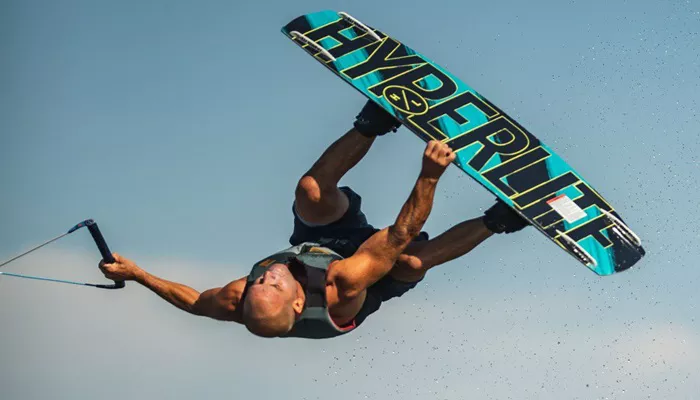Wakeboarding is an exhilarating water sport that combines elements of surfing, snowboarding, and water skiing. It involves riding a wakeboard, which is a small, rectangular board with bindings for the rider’s feet, behind a speeding boat. The wakeboarder performs tricks and maneuvers on the waves created by the boat, known as the wake.
This sport requires a combination of balance, strength, and coordination, making it both challenging and rewarding for participants.
How A Wakeboard Works
A wakeboard is designed to glide smoothly over water, allowing riders to perform a variety of stunts and tricks. Here’s a detailed look at how it works:
Design and Components
A wakeboard typically ranges from 130 to 147 cm in length and is about 40 to 45 cm wide. It is made from a combination of materials, including wood, foam, and fiberglass, which provide durability and buoyancy. The board has bindings that secure the rider’s feet in place, allowing them to control the board’s movements.
The wakeboard’s bottom surface often features a rocker, which is the curvature of the board from nose to tail. This rocker helps the board to ride smoothly over the water and maintain speed. Some wakeboards also have channels or fins on the bottom, which enhance stability and control by providing additional grip on the water.
Riding the Wake
When a wakeboarder is towed behind a boat, they ride on the wake created by the boat’s movement. The wake acts as a ramp, allowing the rider to gain speed and perform jumps. The size and shape of the wake depend on the speed of the boat and its design. Generally, a faster boat creates a larger wake, which is ideal for performing aerial tricks.
Techniques and Tricks
Wakeboarding involves a range of techniques and tricks, from basic maneuvers like turning and stopping to advanced stunts like flips and spins. Riders can perform tricks on the wake, such as jumping over the wake and landing on the other side, or they can ride on the flat water between the wakes.
To execute tricks, wakeboarders use their body weight and the edge of the board to control direction and speed. They can shift their weight to initiate turns or apply pressure to the edge of the board to carve through the water.
Safety Considerations
Safety is crucial in wakeboarding. Riders should always wear a properly fitting life jacket and a helmet to protect themselves from injury in case of a fall. It’s also important to ensure that the bindings are securely fastened and that the rider is comfortable with the speed and conditions before attempting any tricks.
Equipment and Accessories
In addition to the wakeboard itself, several pieces of equipment are essential for wakeboarding:
Boat: The boat is the primary source of power for wakeboarding. It needs to be capable of reaching speeds of at least 18 to 25 mph to create a suitable wake.
Rope and Handle: The rope and handle are used to tow the rider behind the boat. The length of the rope can be adjusted to change the distance from the wake.
Bindings: These secure the rider’s feet to the board and come in different sizes to fit various foot sizes.
Life Jacket and Helmet: These are essential safety gear to protect the rider from injury.
Advanced Techniques and Tricks
As riders gain experience, they can move on to more advanced techniques and tricks. These include:
Air Tricks
Air tricks involve jumping over the wake and performing stunts in the air. Common air tricks include ollies (jumping without using the wake), flips (rotating the board in the air), and spins (rotating the body while airborne).
Rail Tricks
Rail tricks involve sliding on obstacles placed in the water, such as rails or boxes. These tricks require precision and control to maintain balance on the rail.
Wake-to-Wake Jumps
Wake-to-wake jumps involve riding up one wake and launching over it to land on the other wake. This trick requires timing and speed to successfully clear the gap between the wakes.
Conclusion
Wakeboarding is a dynamic and thrilling sport that offers a unique combination of speed, skill, and excitement.
Understanding how a wakeboard works and mastering its techniques can lead to a rewarding experience for both beginners and seasoned riders. Whether you’re interested in cruising behind a boat or performing complex tricks, wakeboarding provides endless opportunities for fun and challenge on the water.
Additional Tips for Beginners:
Start with a Lesson: Consider taking a lesson from a certified instructor to learn proper techniques and safety guidelines.
Practice on Flat Water: Before attempting tricks on the wake, practice turning and stopping on flat water to build confidence and control.
Adjust Your Stance: Experiment with different foot positions on the board to find what feels most comfortable and balanced for you.
By following these tips and continuing to practice, you can enjoy the thrill of wakeboarding while improving your skills and safety on the water.

